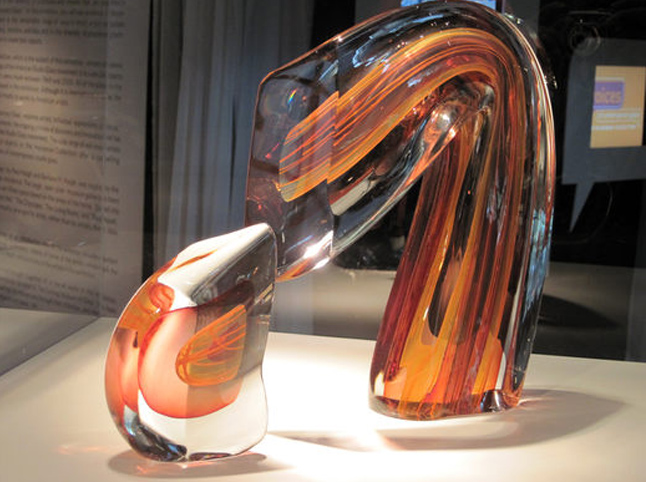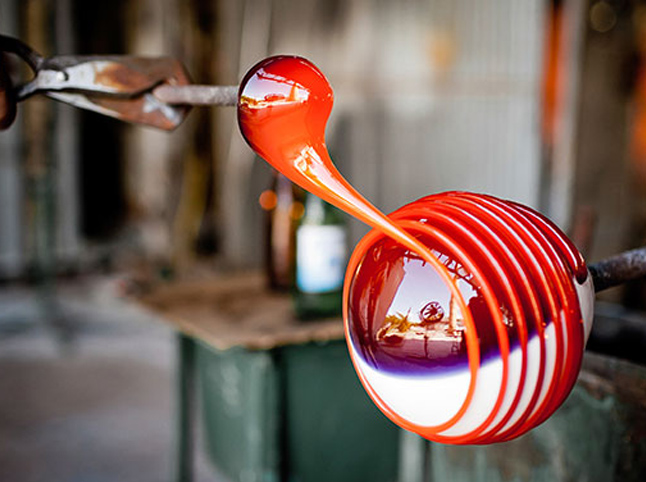Corning Museum of Glass
Established in 1951 by Corning Glass Works (now Corning Incorporated) as a gift to the nation for the company’s 100th anniversary, The Corning Museum of Glass (CMoG) is a not-for-profit museum dedicated to telling the story of a single material: glass. Annually welcoming just under half a million visitors from around the world, its campus is home to the world’s most comprehensive collection of glass, the world’s foremost library on glass, and one of the top glassworking schools in the world.
Glass is a versatile, ancient material that is still being explored and understood by artists, scientists and historians today. The story of glass is a story about art, history, culture, technology, science, craft and design.
Nearly 50,000 objects representing more than 3,500 years of history are displayed in the galleries; items range from the portrait of an ancient Egyptian pharaoh to contemporary sculpture. The Museum’s highly regarded curators and librarians actively acquire materials; and curators, librarians, educators and artists organize special on-campus and traveling exhibitions; teach; conduct and publish extensive research; host numerous artist residencies and public presentations; and showcase daily demonstrations of contemporary glassworking. The Corning Museum of Glass’s authority on glass art is felt around the world.
Visitors can learn about the science and technology behind innovations in glass through hands-on exhibits in the science and technology gallery, called the Innovation Center. They can explore the concepts behind optics, vessels and windows and meet the innovators who have changed our world using glass.
The Museum is a center for glass scholarship. A key component of the institution is The Juliette K. and Leonard S. Rakow Research Library: the world’s foremost library on the art, history and science of glass and glassworking. The Rakow’s mission is to acquire everything published on the subject of glass, in every format and in every language. This invaluable resource for scholars and artists also offers an exhibition space for curated exhibitions that bridge the Library’s rich collections with rare books, objects, materials and stories that interpret the Museum’s various collections in exciting and inspiring ways. In addition, the Museum regularly publishes journals, educational videos and scholarly publications — many of which can be accessed on its content-rich website. Both the Rakow and glass collections are available on the website and are fully searchable across both collections.
CMoG brings glass to life through live, narrated glassworking demonstrations. Some of these daily demonstrations take place in a renovated historic glass factory building that contains one of the world’s largest facilities of its kind, with auditorium-style seating for 500. The Museum also offers live Hot Glass Demos on The Road with its traveling hotshop for those who can’t actually visit Corning. In addition, the Museum offers a design program, GlassLab, aimed at helping designers explore glass as a material for their work.
To enable visitors to try their own hand at making glass, the Museum offers Make Your Own Glass sessions for beginners. The Museum’s internationally renowned glassworking school, The Studio, offers more intensive courses in all levels of glassworking year-round.
Even the 10-acre campus of The Corning Museum of Glass is a unique collection of modern glass, as displayed in its architecture. The Museum’s buildings have been influenced by three distinct generations of architects, all of whom shared the goal of creating a fluid space and incorporating glass wherever possible. The effect is powerful. In 2007, the public voted The Corning Museum of Glass as #136 on a list of America’s 150 favorite buildings, in a poll conducted by The American Institute of Architects.
The most recent addition to the Museum, opened in March 2015, is a 100,000-square-foot Contemporary Art + Design Wing which includes a 26,000-square-foot gallery. It is the largest space anywhere dedicated to the presentation of contemporary art in glass. Karol Wight, the institution’s president and executive director, has observed, “The opening of the Contemporary Art + Design Wing was a pivotal moment for the Museum. CMoG provides the rare opportunity to experience the medium’s complete and complex history, appreciate its application as an artistic medium, and witness and participate in its creation all in one place. Contemporary artists are taking glass to a new scale, and our new wing allows us to showcase these monumental works in an ideal viewing atmosphere.”
In all of its facets, the Museum is a dynamic institution that continues to actively collect, educate, preserve and share the experience of the art, history, and science of glass. The Museum helps visitors to see glass in a whole new light.


